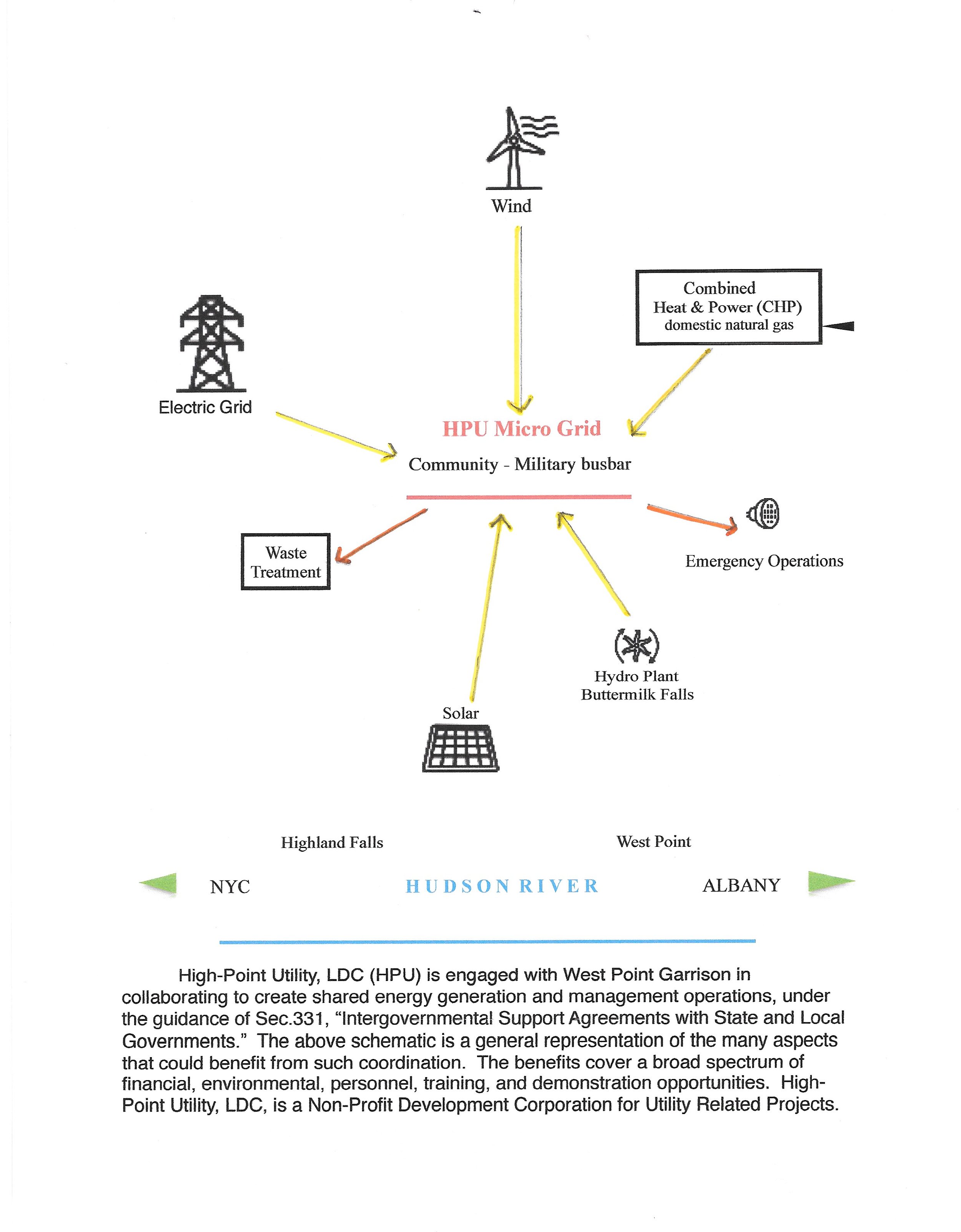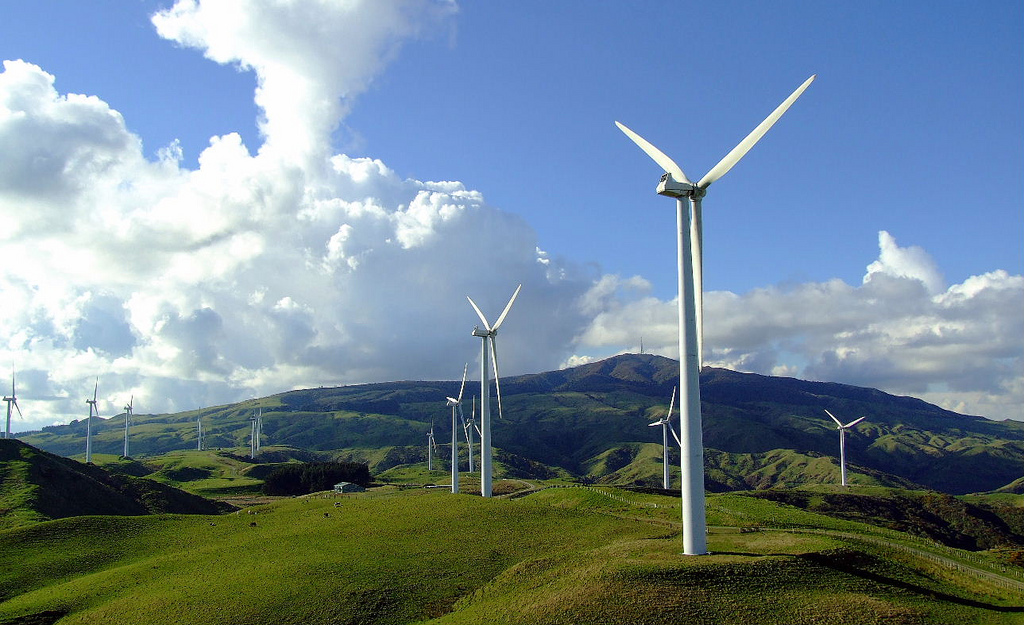Schematic diagram of the integration of projects into our HPU Microgrid
Bringing in the local communities for energy surety,
Strengthen the military's resilience,
Serve as a prototype for other bases throughout America,
Provide sites for Cadet Engineer projects and further the educational goals of the Academy.
wind
solar
hydropower
demand response program.
The program, which our HPU initiated for West Point, went live at the end of August, 2017;
Chris Miles from NuEnergen made a report on the program both with the Academy and the Village. West Point made $50,000 on this program, this year.
combined heat & power
Combined heat and power (CHP), also known as cogeneration, is:
The concurrent production of electricity or mechanical power and useful thermal energy (heating and/or cooling) from a single source of energy.
A type of distributed generation, which, unlike central station generation, is located at or near the point of consumption.
A suite of technologies that can use a variety of fuels to generate electricity or power at the point of use, allowing the heat that would normally be lost in the power generation process to be recovered to provide needed heating and/or cooling.
pumped storage
microGrid
A microgrid is capable of operating in grid-connected and stand-alone modes and of handling the transition between the two. In the grid-connected mode, ancillary services can be provided by trading activity between the microgrid and the main grid. In the islanded mode, the real and reactive power generated within the microgrid, including that provided by the energy storage system, should be in balance with the demand of local loads.
A microgrid may transition between these two modes because of scheduled maintenance, degraded power quality or a shortage in the host grid, faults in the local grid, or for economical reasons. By means of modifying energy flow through microgrid components, microgrids facilitate the integration of renewable energy generation such as photovoltaic, wind and fuel cell generations without requiring re-design of the national distribution system. Modern optimization methods can also be incorporated into the microgrid energy management system to improve efficiency, economics, and resiliency.








